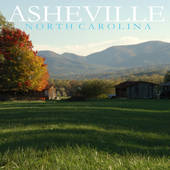Does Brick Really Need To Weep?
JAY has some advice for those of us who love brick homes. Says JAY, "Everything wants to breath, and eliminate moisture, even the walls of your house! My recommendation: When you approach a brick-veneered house, have a look around for weep holes. The house will be happy you did." Read on...
In the olden days the brick siding you saw on houses was structural. There were two layers of brick, into what was tied structural members. The brick was structural, the wood was interior.
Currently the brick siding you see is a facade, sometimes called a "veneer," and the wood interior is the structural part of the house.
Various construction materials combine to create this newer method, but essentially the brick is set off of the wood interior and exterior sheathing, which is all protected by some form of vapor retardation.
The brick is virtually strapped to the house.
As such, moisture develops between the brick and sheathing. It needs somewhere to go.
Weep holes are an important part of the construction method to allow air in and moisture out. An excess of moisture in there can lead to its migration into the interior and when that happens the ultimate result can be molds.
This is one form of weep hole. A section of mortar between the bricks has been intentionally left out. Other weep holes can include a multiplicity of simple holes, or wicks, plastic inserts, and so on.
Either way, when you look at a brick-sided house, weep holes are an important thing to look for.
Often I don't see them!
Why? Because they have been diligently eliminated by a home owner who does not understand why that silly brick layer left holes all over his house! By golly, he wanted to fix that "oversight..." and got right on it!
Homeowner "fixes" I have seen include caulking, mortar, rags, spray polyfoam (which is ALWAYS very attractive) and wax!
The "fixes" look something like this!
This particular house was built in 1972, just after the "new" brick facade siding came into vogue. As such it had weep holes all around.
And these weep holes were filled all around by some house-savvy homeowner! This guy chose mortar.
Some of it was cracking and loose so I could tell it had been there a while.
Don't do this!
Everything wants to breath, and eliminate moisture, even the walls of your house!
My recommendation: When you approach a brick-veneered house, have a look around for weep holes. The house will be happy you did.
Jay Markanich Real Estate Inspections, LLC
Based in Bristow, serving all of Northern Virginia


Comments(4)